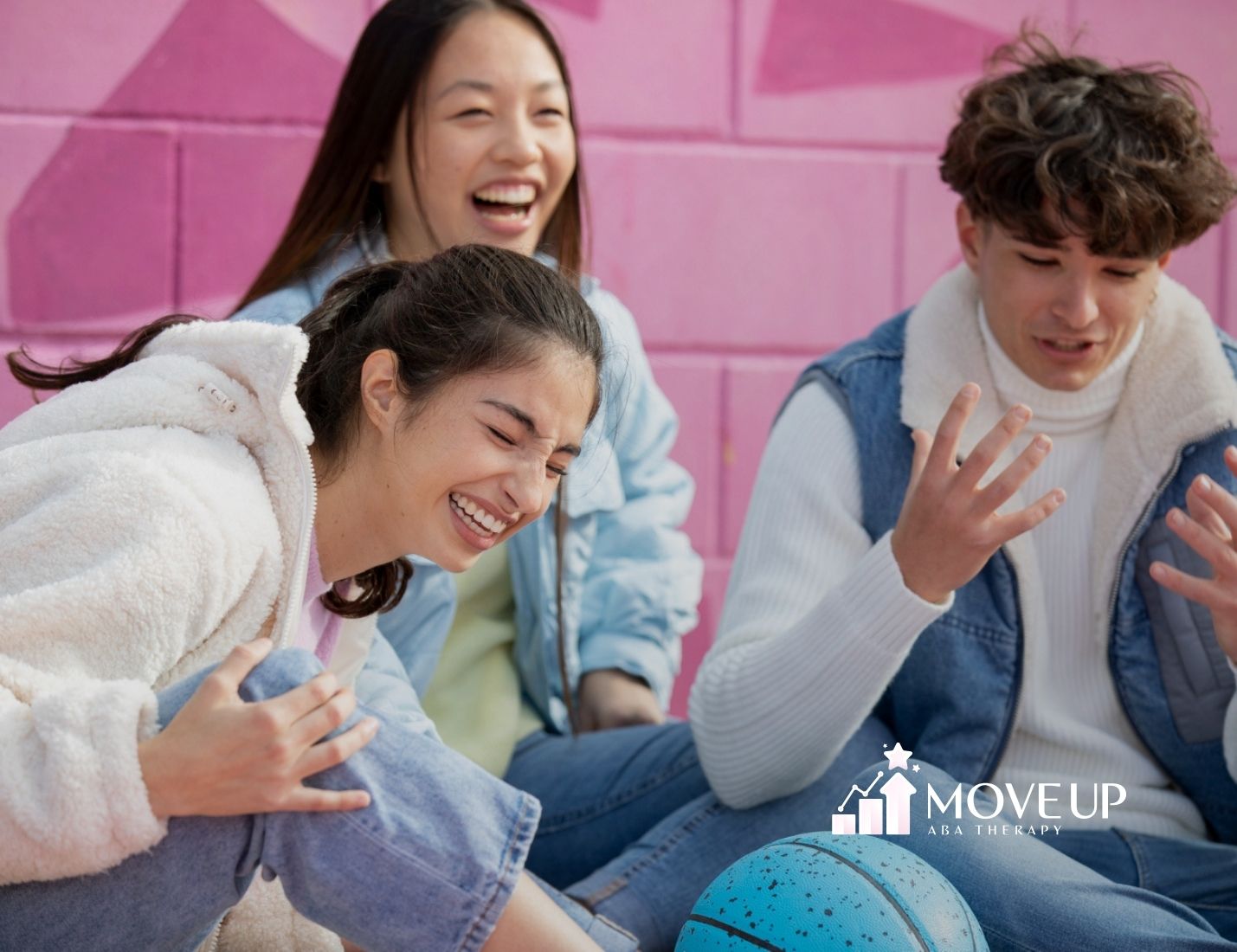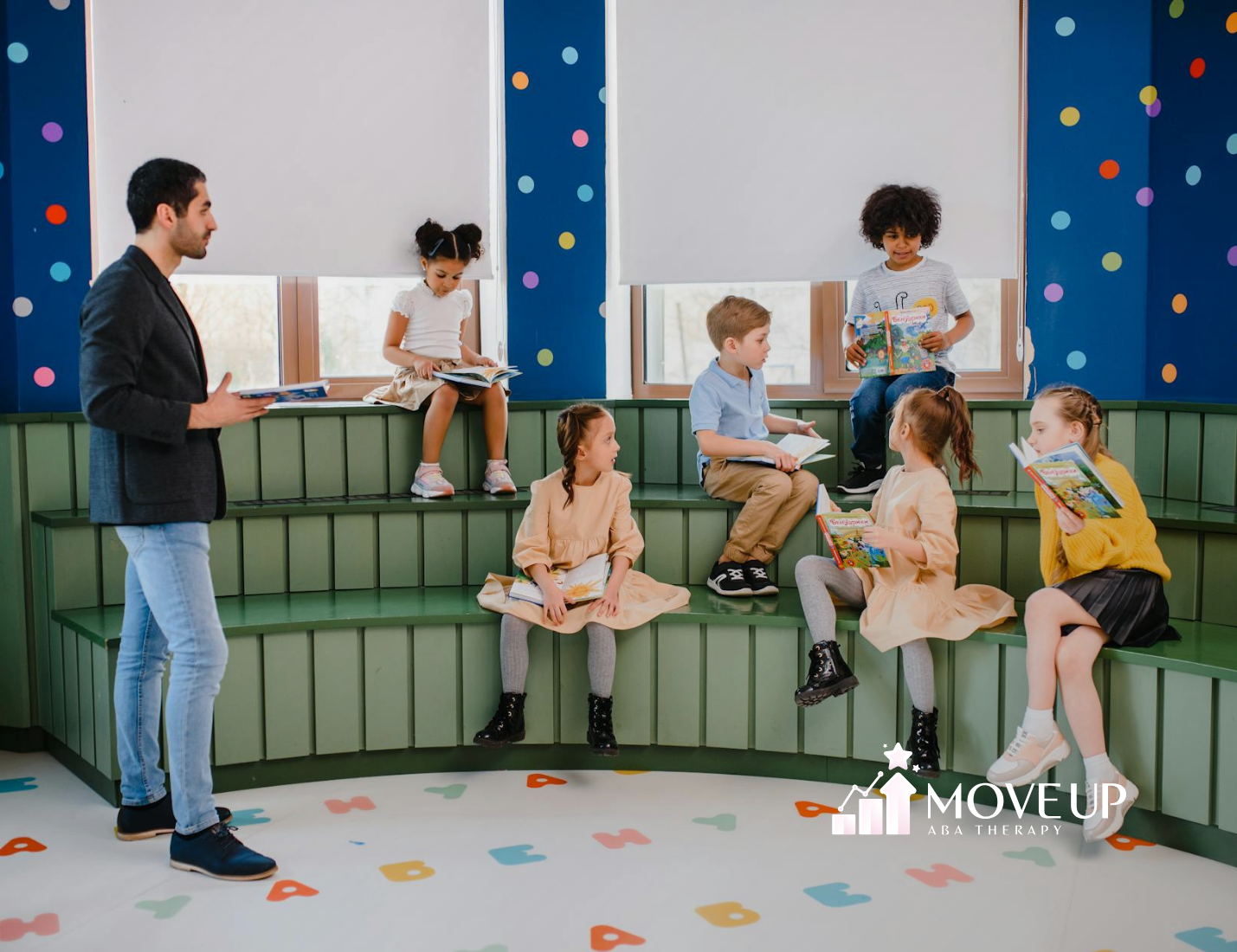Adolescents with autism face a unique mix of challenges—and ABA therapy is uniquely equipped to help. Through targeted interventions, teens gain the tools to succeed at home, school, and beyond.
One young man I supported had a tough time transitioning between classes and was often overwhelmed by noise. After incorporating coping strategies and sensory supports, he became more relaxed—and even started helping classmates with their transitions.
Understanding ABA Therapy for Adolescents
What is ABA Therapy?
Applied Behavior Analysis (ABA) therapy is a powerful, evidence-based approach that helps individuals—especially those with autism spectrum disorder (ASD)—learn meaningful skills and reduce behaviors that interfere with everyday life. At its core, ABA therapy is all about understanding how behavior is influenced by the environment and using that knowledge to bring about positive change.
In my work with teens, I’ve seen firsthand how this approach can be life-changing. By identifying what drives certain behaviors, we can create targeted strategies that help adolescents thrive socially, emotionally, and academically. The best part? ABA therapy isn’t a one-size-fits-all model—it’s flexible and tailored to meet each individual’s unique needs.
How ABA Therapy Benefits Adolescents
When it comes to teenagers, ABA therapy offers so many benefits. Let’s break down a few of the most impactful:
- Improved Social Skills – Teens learn how to start conversations, pick up on social cues, and build friendships.
- Enhanced Communication – Whether it’s through verbal speech or alternative communication methods, we help teens express themselves more clearly.
- Behavioral Regulation – ABA gives teens tools to manage strong emotions, frustration, and anxiety.
- Increased Independence – We work on life skills like organizing tasks, self-care, and decision-making to foster autonomy.
- Academic Support – By reinforcing focus and task completion, teens can become more successful learners.
Here’s a quick summary:
| Benefit | Description |
| Improved Social Skills | Development of essential social interactions |
| Enhanced Communication | Better expression of thoughts and feelings |
| Behavioral Regulation | Management of emotions and behaviors |
| Increased Independence | Empowerment in daily living skills |
| Academic Support | Improved focus and task completion in school settings |
In my experience, when teens start seeing progress in these areas, it’s like watching a light turn on—confidence grows, and new opportunities open up.
Tailoring Interventions for Adolescents
Individualized Treatment Plans
No two teens are the same, so every treatment plan must reflect the adolescent’s unique personality, challenges, and goals. That’s why we always begin with a comprehensive assessment. We evaluate their strengths, identify areas for growth, and then work closely with caregivers to map out a personalized plan.
Here’s how we build that plan:
- Assessment – We dig deep into the teen’s skills, behaviors, and environment.
- Goal Setting – We collaborate with families to create clear, measurable, and meaningful goals.
- Intervention Design – Strategies are built around the teen’s interests, learning style, and needs.
- Implementation – We apply the plan in real-world settings, like home, school, or the community.
- Review and Adjust – Regular progress reviews help us fine-tune strategies as the teen grows.
Behavior Analysis Techniques
A big part of what we do involves breaking down behavior into smaller parts and using evidence-based tools to support growth. Here are some of the techniques I regularly use:
- Positive Reinforcement – Rewarding positive behaviors to encourage repetition.
- Prompting – Providing subtle cues or assistance to guide behavior.
- Modeling – Demonstrating the behavior we want to see.
- Shaping – Reinforcing small steps toward a larger goal.
- Functional Behavior Assessment (FBA) – Digging into why a behavior is happening so we can respond effectively.
These tools help us create change in a way that feels natural and achievable for the teen.
Common ABA Therapy Interventions
Social Skills Training
Adolescence is a critical time for social development. I’ve worked with teens who desperately want to connect but don’t know how. That’s where social skills training comes in. We role-play, use games, and practice real-life scenarios to build confidence and competence.
We focus on things like:
- Eye Contact – Building awareness of its role in communication.
- Turn-Taking – Practicing patience and respect during group interactions.
- Emotional Awareness – Helping teens read and respond to emotions appropriately.
Communication Development
Whether a teen is verbal or nonverbal, communication is key to self-advocacy and independence. We might use visual tools like PECS (Picture Exchange Communication System) or focus on developing expressive and receptive language.
Some of our goals include:
- Expressive Language – Using words or devices to express needs and opinions.
- Receptive Language – Following directions and understanding language in context.
- Non-Verbal Communication – Reading body language, facial expressions, and gestures.
Behavior Modification Techniques
Many of the teens I work with come in with behaviors that are misunderstood. Rather than focusing on punishment, we aim to teach more appropriate behaviors.
We often use:
- Positive Reinforcement – Rewards to increase positive behaviors.
- Prompting – Helping them get started with a task or behavior.
- Consequences – Clear, fair responses to discourage negative behavior.
Implementing ABA Therapy at Home
Parental Involvement and Support
You’re not just a parent—you’re your teen’s biggest cheerleader and most consistent teacher. When families are involved in therapy, progress happens faster and sticks longer.
Here’s how you can help:
- Consistent Reinforcement – Celebrate those wins! Whether it’s a high-five or extra screen time, reinforcement matters.
- Modeling – Show the behaviors you want to see—teens are watching.
- Stay in the Loop – Keep communication open with your therapy team.
Creating a Structured Environment
Teens thrive on predictability. A structured environment makes them feel safe and in control.
What works best:
- Daily Routines – Set times for meals, chores, homework, and fun.
- Clear Expectations – Be clear and consistent with rules and consequences.
- Visual Aids – Use charts, calendars, or visual schedules to guide the day.
Progress Monitoring and Adjustments
Tracking Progress
We’re constantly collecting data—on behaviors, skill development, and emotional regulation. This helps us understand what’s working and what needs to change.
Some tools I recommend:
- Behavior Logs – Simple notes on frequency, context, and triggers.
- Checklists – Mark off goals or behaviors as they’re achieved.
- Graphs – Great for visual learners and keeping everyone motivated.
Modifying Interventions as Needed
As teens grow, their needs evolve. Sometimes that means shifting our strategies. We might:
- Update Goals – Set more advanced objectives.
- Switch Techniques – Try new methods for greater impact.
- Adjust Intensity – Add more support—or pull back—as needed.
This is why constant collaboration between parents and therapists is so essential. Your observations at home matter just as much as what we see during sessions.
Collaborating with Therapists and School
Communication with Therapists
You know your child best. Don’t hesitate to share updates, concerns, or even wins. Regular communication helps us stay aligned and ensures your teen’s support is seamless.
Tips for staying connected:
- Schedule Check-Ins – Weekly or biweekly meetings help us stay on track.
- Share What You See – Your insights are invaluable.
- Request Feedback – Ask what you can do at home to support goals.
Advocating for Support in School
Teens spend a lot of their time at school, so it’s important that supports are consistent there too.
Advocacy tips:
- IEPs – Make sure your child’s Individualized Education Plan includes ABA-informed strategies.
- Build Relationships with Teachers – Collaboration is key.
- Attend School Meetings – Be present and speak up for what your child needs.
Supporting teens through ABA therapy is a collaborative, evolving journey—and one that’s absolutely worth taking. I’ve seen how the right interventions, when paired with strong family involvement and school support, can create life-changing progress.
If you’re in Maryland and looking for compassionate, effective ABA therapy services for your adolescent, we’re here to help. Reach out to Move Up ABA at info@moveupaba.com or call (410) 497-8865 to get started. Let’s build a brighter future—together.
FAQs
What is ABA therapy for adolescents and how does it work?
ABA therapy for adolescents uses evidence-based strategies to help teens improve communication, social skills, emotional regulation, and daily independence. Each plan is tailored to their unique needs.
How is ABA therapy different for adolescents compared to younger children?
While the core principles are the same, ABA therapy for adolescents focuses more on independence, peer relationships, emotional awareness, and transition skills for adulthood.
Can my teen with autism benefit from ABA therapy?
Absolutely. ABA therapy for adolescents can help teens on the autism spectrum manage behavior, build meaningful relationships, and gain life skills that boost confidence and independence.
Sources:
- https://pmc.ncbi.nlm.nih.gov/articles/PMC9458805/
- https://pmc.ncbi.nlm.nih.gov/articles/PMC7265021/
- https://www.autismspeaks.org/expert-opinion/aba-teens
- https://www.autismspeaks.org/functional-behavior-assessment
- https://www.understood.org/en/articles/functional-assessment-what-it-is-and-how-it-works







